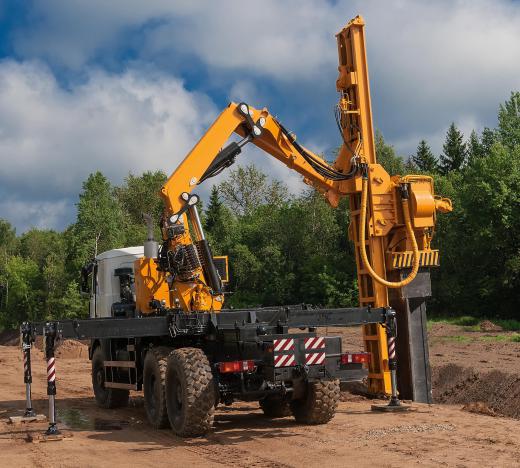What Is Reciprocating Motion?
Reciprocating motion refers to any repeating motion in a straight line, which includes up and down, side to side, or in and out. This motion can pump water, power machinery, refrigerate food and has many other uses. The principle of reciprocating motion drives most internal combustion engines.
An engine fueled by gasoline or diesel can provide power by igniting the fuel in an air mixture. The energy of combustion forces a piston in a linear, or straight line, motion within a cylinder. A piston rod is connected to a drive shaft in a position off of center, and the piston motion is converted to rotary motion that can power the vehicle. Reciprocating up and down in the cylinder, the piston repeatedly compresses the fuel, transferring power to the drive shaft, and exhausting the waste gas.

Rotary motion can also be used to create reciprocating motion. Rack and pinion steering in many automobiles consists of a circular gear, or pinion, aligned with a straight geared shaft. As the steering wheel is turned, the pinion rotates, moves the shaft back and forth, and the wheels turn.
Motion can also be up and down. An example is a hand operated well pump. The pump handle is moved up and down which operates a piston below ground at the end of a shaft. Each time the handle is pushed down, the piston is pulled up and creates a suction to draw water from the well. Electrically-driven oil well pumps use the same principle, with a rotary electric motor driving an oscillating arm that powers the pump.
Some steam engines in the 1800s were dual-action machines that provided power in two directions. A piston was centered in a horizontal cylinder and a shaft was connected out from both sides of the piston to rotary cams. One side of the piston was pressurized with steam while the other side was vented, and the process was reversed. The reciprocating motion of the shaft was converted to rotary motion that could power machinery.
Linear reciprocating motion can be used directly without converting it to rotary action. Impact hammers and pile drivers use a reciprocating piston powered by air or steam. Each power stroke of the piston can be used as energy to drive fasteners or set foundation pilings.
Gas compressors can be reciprocating systems. In these systems, the compressor shaft is driven by a gas or electric motor, which causes the pistons to move. Many refrigeration compressors and industrial air compressors use reciprocating machines because they can provide larger capacity for a given power requirement versus a rotary compressor.
Diaphragm pumps are reciprocating machines. A connecting rod from the drive shaft is mounted on one side of a rubber or polymer diaphragm, which is a solid gasket. The reciprocating motion of the connecting rod pushes the diaphragm back and forth, which draws fluid in and discharges it. Diaphragm pumps are commonly used for fluids containing solids, such as mud, or some corrosive chemicals.
AS FEATURED ON:
AS FEATURED ON:











Discuss this Article
Post your comments